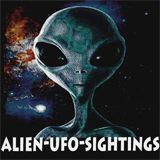Area 51 The Revealing Truth of Ufos, Secret Aircraft, Cover-Ups & Conspiracies
In 2011, the biggest Area 51-connected controversy since Bob Lazar surfaced came from a respected author and investigative journalist named Annie Jacobsen. Her books include The Pentagon’s Brain; Operation Paperclip; and Phenomena. Her book Area 51: An Uncensored History of America’s Top Secret Military Base is a very good, solid history of Area 51. Jacobsen’s book does not cover the UFO subject to a large degree, though, and even the Bob Lazar story is only covered relatively briefly. What Jacobsen does cover to an extensive degree, though, is a previously unknown theory for what happened at Roswell, New Mexico, in the summer of 1947. It’s a theory that is inextricably tied to Area 51.
Over the years and decades, numerous theories have surfaced for what crashed at Roswell. They include an atomic bomb dropped by mistake from a military plane, which fortunately failed to detonate; a time machine from the future; a high-altitude balloon designed to monitor Soviet atomic bomb tests; a weather balloon; and a secret prototype aircraft of the U.S. Air Force. The scenario given to Jacobsen, though, was quite different. Radically so, too.
According to the story provided to Jacobsen, the Roswell event had nothing whatsoever to do with extraterrestrials but everything to do with government conspiracies—but not American conspiracies. It’s to the former Soviet Union that we have to turn our attentions. Before we get to the story, let’s first focus on the man who provided the story to Annie Jacobsen. His name was Alfred O’Donnell. He appears several times—by name—in Jacobsen’s book, but he also appears in the book as “one of the elite engineers from EG&G.” Jacobsen was careful to make sure that O’Donnell was not mentioned by name in her book in relation to Roswell, but it didn’t take long before that elite engineer was outed. It was all thanks to a UFO researcher named Anthony Bragalia, who spoke with O’Donnell and got the goods from him.
Jacobsen’s book was published in May 2011. Within days, Bragalia had been able to confirm that O’Donnell was indeed the source of the story. Bragalia said of all this: “Ms. Jacobsen’s source about this Roswell story is unnamed by her in the blockbuster book. He wanted to remain anonymous. Annie Jacobsen kept her promise. I did not learn her source from her or from anyone associated with her publishing company.
His identity and his background is revealed here and now.”Bragalia continued in 2011: “Alfred O’Donnell is nearly 89 years old and he is one of Annie Jacobsen’s key sources about this Roswell crash story ‘interpretation.’ O’Donnell is indeed exactly who he claims to have been. In the early 1950’s he was at the ‘Nevada Test Site’ where atomic bombs were tested regularly. O’Donnell was indeed part of the nucleus of top management and engineers for EG&G—one of our nation’s top defense contractors. Founded as Edgerton, Germeshausen and Grier (EG&G) the company was acquired by URS Corporation some years ago.
URS employs over 50,000 and is the leading designer and builder of federal classified facilities in the United States. They work with military as well as with the Intelligence Community (particularly the NSA) in constructing and operating some of our nation’s most sensitive and secret facilities.” Bragalia made his position clear: he concluded that O’Donnell truthfully related the story as it was told to him decades earlier, but he also believed that O’Donnell was himself lied to by his Area 51-based colleagues and fed disinformation to further muddy the Roswell waters. With that all said, what, exactly, did Annie Jacobsen conclude was the answer to the Roswell puzzle?
Let’s see.
Alfred O’Donnell told Annie Jacobsen that in the early part of July 1947, the U.S. military monitored—via radar—the movements of two unidentified flying objects in New Mexico airspace. The objects were clearly not normal aircraft since they had the ability to hover, which, Jacobsen correctly notes, “was beyond any aerodynamic capabilities the U.S. Air Force had in development in the summer of 1947.” One of those craft crashed days later near Roswell, New Mexico, and in the process created a legend—that of a crashed UFO and its alien crew—but O’Donnell was having none of that theory. He was very clear to Jacobsen that the interior of the craft contained … Russian writing. This was of extreme concern to the U.S. military, as New Mexico was a hotbed of secrecy at the time with classified work undertaken at both White Sands and Los Alamos.
The last thing they needed was the Russians flying around such a sensitive area.
The story got even more controversial: the Russian craft and crew were not flying over New Mexico as a means to spy on what the U.S. government was up to there, though. No. A very different and highly strange agenda was the order of the day. In an equally strange way, the Russians took their inspiration from the acclaimed movie actor, producer, and director Orson Welles. To understand the connection and what the Russians had in mind, we have to take a look at the life and career of a man named Kenneth Goff.
